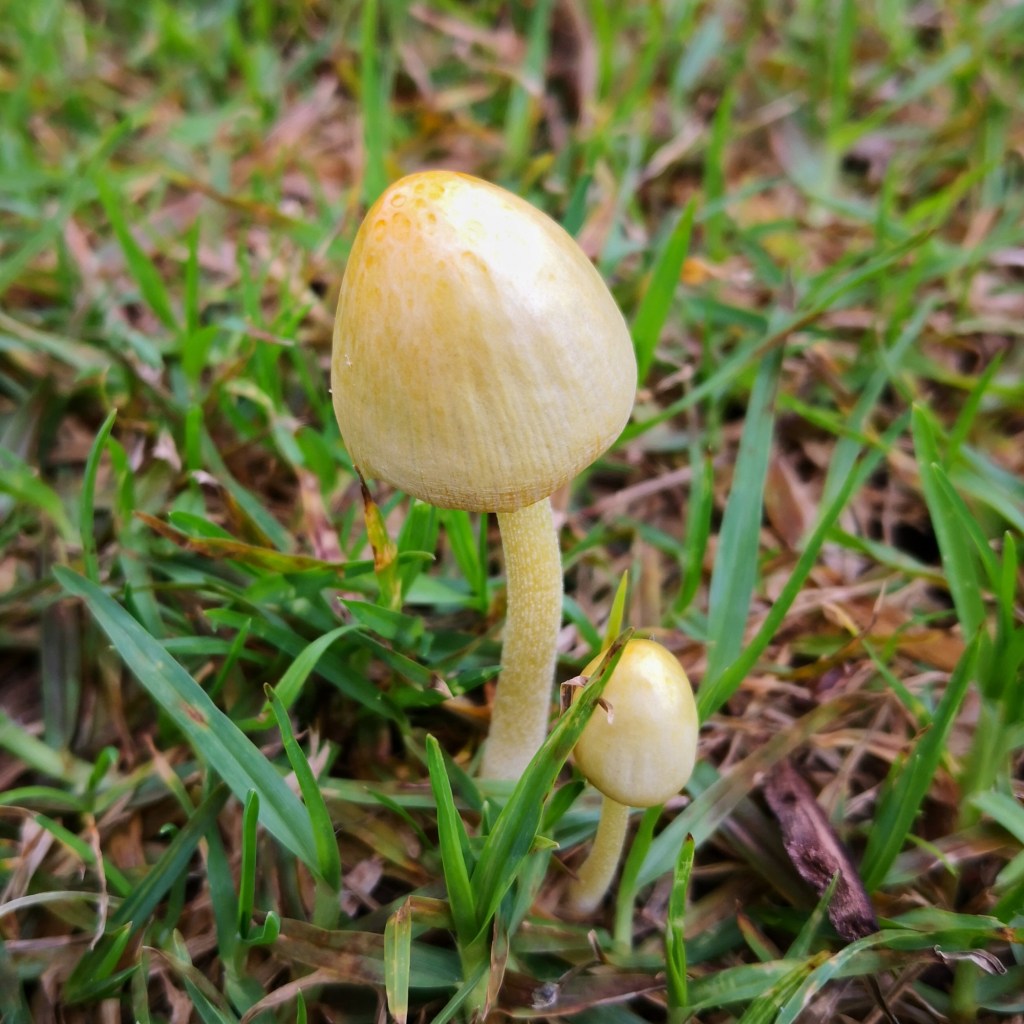
Phylum: Basidiomycota. Class: Agaricomycetes. Order: Agaricales. Family: Bolbitiaceae
Yellow Field caps are listed here for interest only. They are edible but are so tiny, watery and tasteless that they’re only really suitable as a famine food. It would take a good many to make a handful and when they are cooked, they shrink to almost nothing. They are, however easily found and usually occur in numbers in the cooler weather.
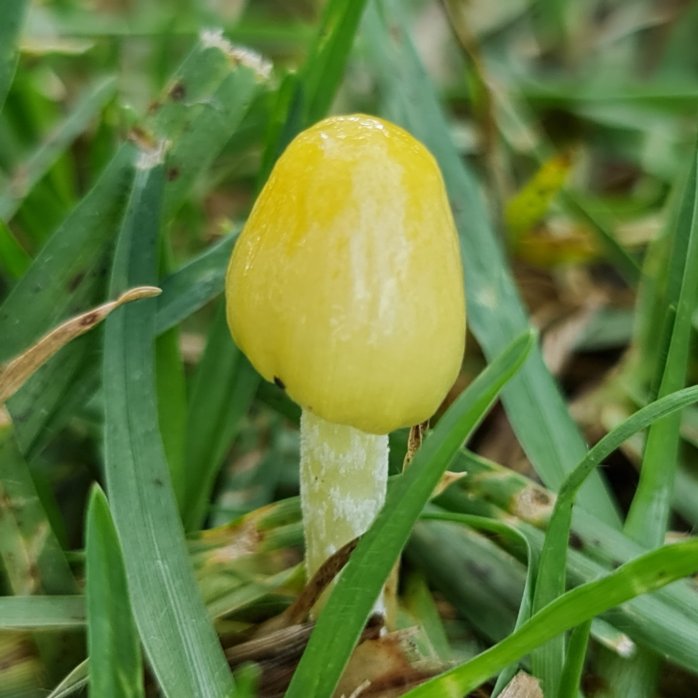
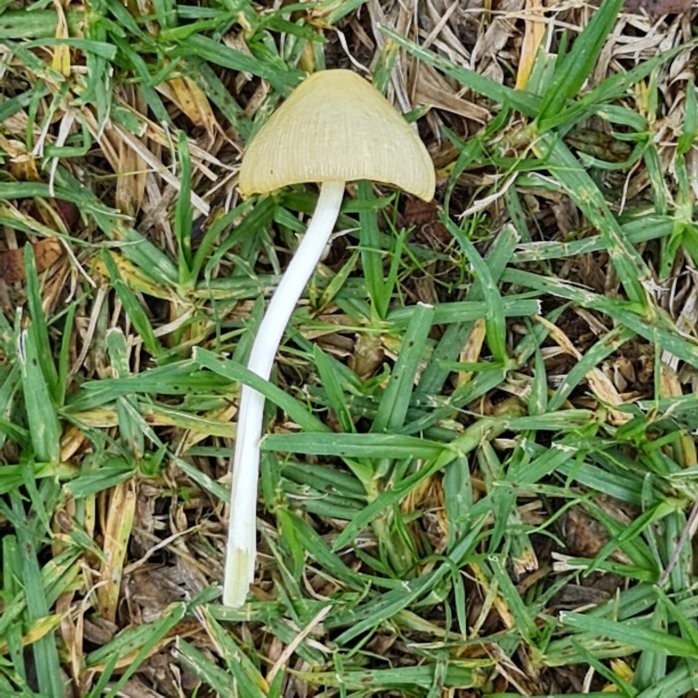
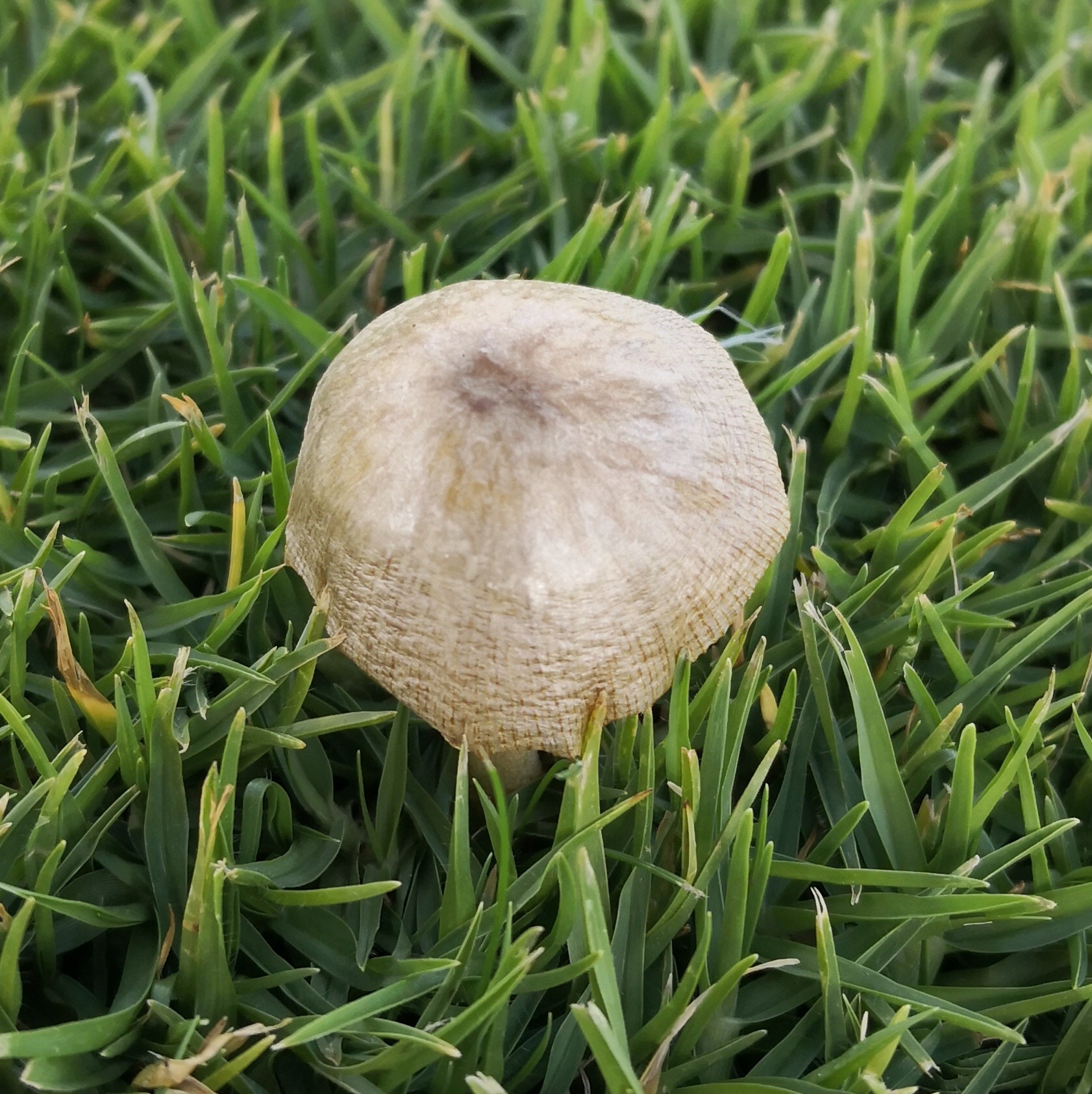


That being said, I find the appearance of these little yellow mushrooms to be a joy. They are so bright when young but shrivel and fade to a dull, wrinkly grey when they age, often after mere hours. They remind me of the transience of things – you can see them bright and yellow at the start of a walk but see no trace of them when you return.
Yellow Fieldcaps grow in grass and hay and are commonly found on ovals and in parks near Gawler. They can be found all day, even in full Sun.
Identifying Yellow Fieldcaps (Bolbitius titubans)- a summary
- Young caps are yellow and moist/slimy, almost egg shaped and open up as they mature.
- Old caps turn grey and shrivel, often within a few hours.
- Striations are visible on the caps as they open up and before they start to shrivel
- Gills are pale yellow when young and become a cinnamon colour as they age.
- Stem is fragile and hollow, it is yellow tinted white and is slightly patchy/granular towards the top.
- Stem can grow very long.
- Spores are a rusty brown/cinnamon colour.
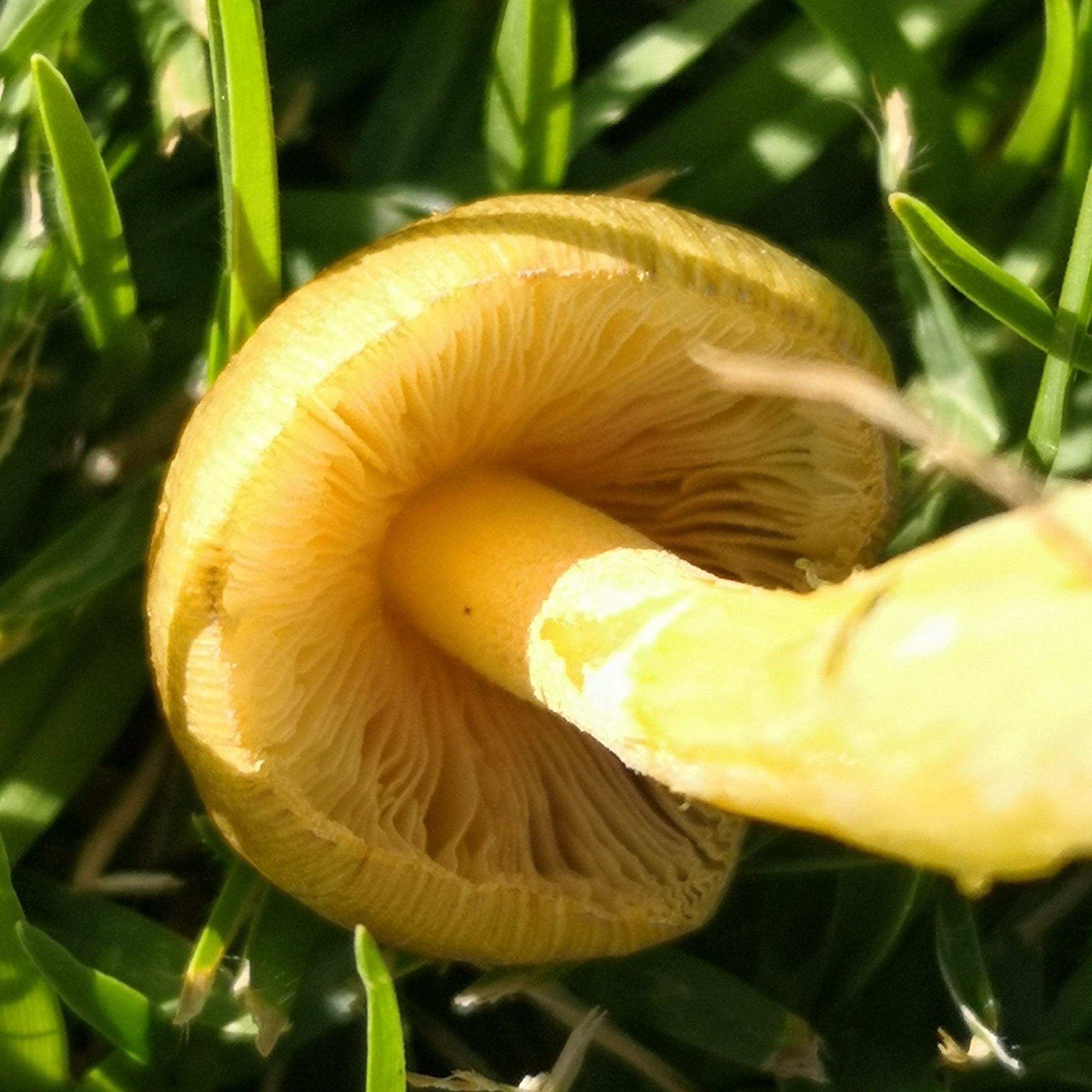
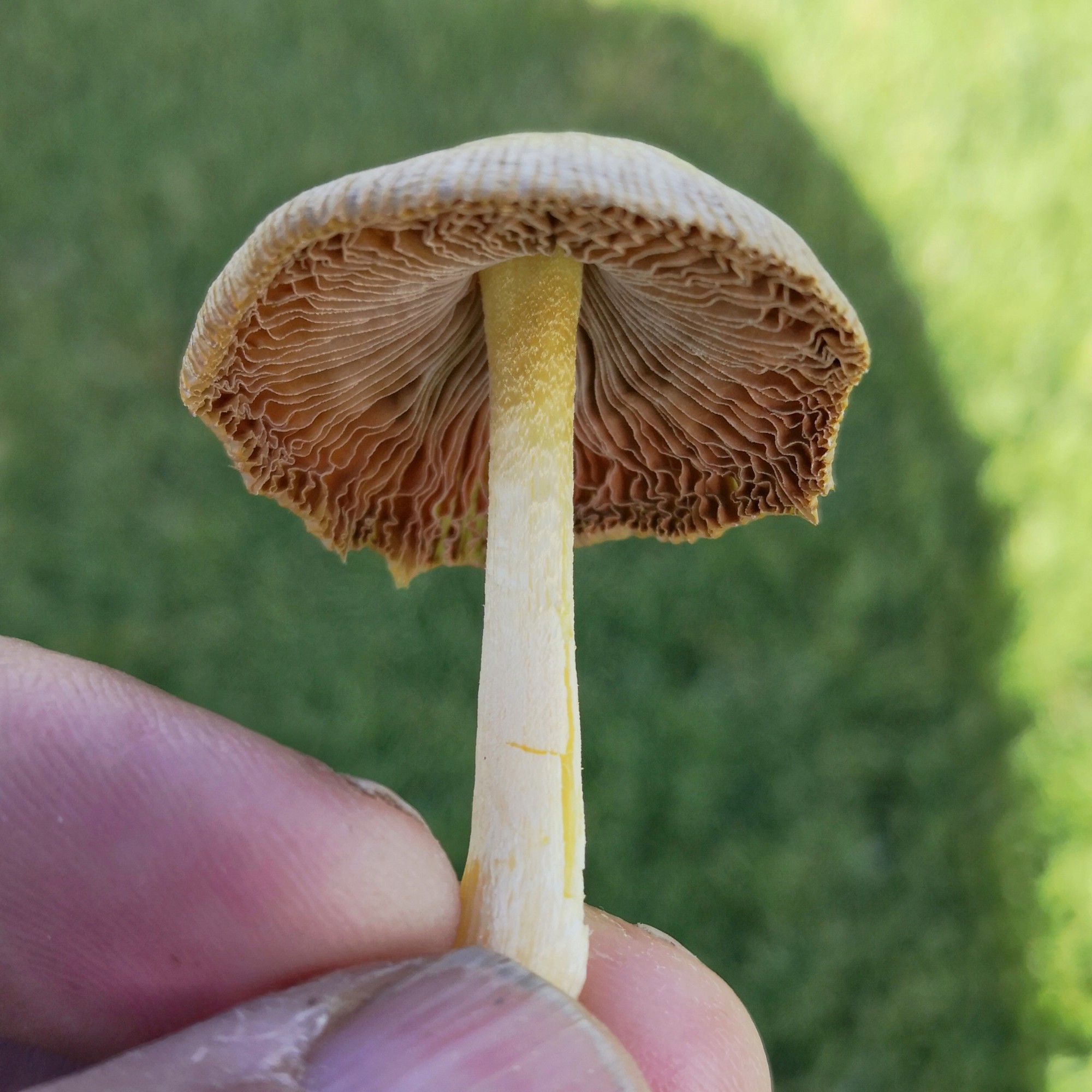
For reference, Yellow Fieldcaps are found on page 32 of ‘A field guide to Australian Fungi’ by Bruce Fuhrer.
